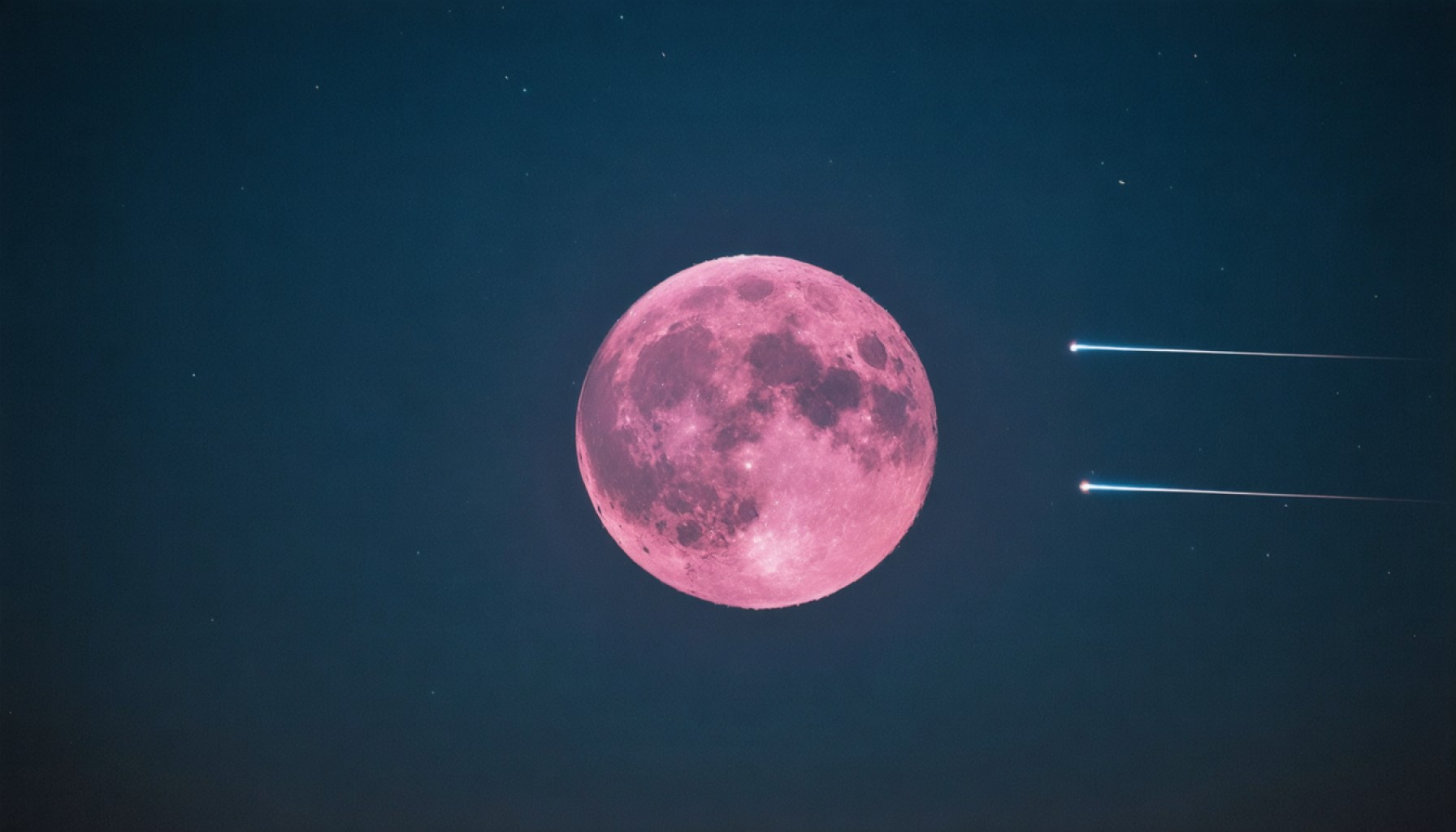- The Pink Moon will rise on April 12th, known for its historical connection to the timing of Easter and named after the pink phlox wildflower.
- This year’s Pink Moon will be a micromoon, appearing smaller and dimmer due to its apogee, or furthest distance from Earth.
- The Lyrid Meteor Shower follows, starting on April 15th and peaking on the 21st and 22nd, offering a dazzling display without the need for telescopes.
- May heralds the Flower Moon on May 12th, celebrating growth and fertility with its alternative names like “Milk Moon” and “Hare Moon.”
- These events illustrate the cyclical nature of time, encouraging reflection on the interconnectedness of past, present, and future amid the celestial wonders of 2025.
As the evening sky blazes with celestial wonders, 2025 promises to be a delight for sky gazers and astronomy aficionados alike. This April, look beyond the familiar twilight to witness nature’s cosmic dance, with events that stir imagination and awe.
April unfolds with the arrival of the Pink Moon, a full moon appearing on April 12th at 8:22 p.m. This spectacle owes its name not to its color, but to the emergence of pink phlox, a wildflower that heralds spring across North America. Like a cosmic clock, the Pink Moon has historically played a role in determining Easter’s date, known as the Paschal Moon when it follows the March equinox.
Adding to its splendor, this moon will appear as a micromoon, for it reaches its furthest point from Earth, the apogee. This positioning makes it appear slightly smaller and less brilliant—a celestial gem to be observed rather than overshadowed by brighter nights. Revel in the serene beauty of this illuminated orb, while contemplating the balance of distance and light in the universe.
Just as the Pink Moon begins to wane, the night sky brings another marvel—the Lyrid Meteor Shower. Kicking off on April 15th, this ancient shower has been a spectacle for over 2,700 years, originating from the debris of Comet Thatcher. Its peak coincides with April 21st and 22nd, when dazzling meteor trails blaze across the sky like fiery tears. No equipment is needed; just look up, as this natural performance is best enjoyed between midnight and dawn. With a cloudless sky and minimal moonlight, lingering trails can leave onlookers spellbound.
Anticipation builds as May approaches, bringing the Flower Moon to the heavens—blooming at its brightest on May 12th. With names like “Milk Moon” and “Hare Moon,” it celebrates the season of growth and fertility, as flowers unfurl their petals beneath its silver gaze.
Spring is a reminder of life’s rhythms, painted across the celestial dome. These astronomical events serve not only as striking visual phenomena but also as symbols of the cyclical nature of time. They connect past, present, and future, inviting us all to pause, look up, and marvel at the grandeur that dwells just beyond our reach.
In this cosmic calendar of 2025, let your eyes wander and your thoughts roam the expanse of space—a reminder of our shared universe that is forever unfolding above us.
Unveiling 2025’s Celestial Wonders: An Astronomical Odyssey Awaits
As we look to the skies in April 2025, a celestial spectacle unfolds, promising to enchant sky gazers and astronomy enthusiasts alike. Beyond the familiar twilight, this month offers a cosmic dance of events that ignite both imagination and awe.
Key Celestial Events in April 2025
1. The Pink Moon: A Symbol of Spring
– Appearing on April 12th at 8:22 p.m., the Pink Moon gets its name from the pink phlox wildflower, not its color. It marks spring’s arrival in North America.
– Stars as a “micromoon” due to its apogee, making it appear smaller and dimmer compared to other full moons, adding a unique value to viewing experiences.
2. Lyrid Meteor Shower: A Historical Marvel
– Begins on April 15th, peaking on April 21st and 22nd. Derived from Comet Thatcher’s debris, it has been observed for over 2,700 years.
– Best viewed between midnight and dawn in clear, dark skies. Offers a mesmerizing display without needing telescopic equipment.
3. Upcoming Flower Moon in May
– Following April’s events, anticipate the Flower Moon on May 12th. Known as the “Milk Moon” or “Hare Moon,” it symbolizes growth and renewal, mirroring the unfolding beauty of spring.
How To Make the Most of April’s Astronomical Events
– Plan Your Stargazing Experience:
– Find locations far from city lights to reduce light pollution and enhance visibility.
– Use star maps or mobile apps like Star Walk 2 or SkyView to navigate and identify celestial objects.
– Pack comfy seating and warm blankets to enjoy long periods of stargazing comfortably.
– Capture the Moment:
– For the Pink Moon, consider using DSLR cameras with telephoto lenses for enhanced detail.
– Set up a tripod for steady shots of the Lyrid meteor shower, using long exposures to catch trails of light.
Insights and Predictions for Sky Gazers
– April’s Pink Moon coincides with cultural and agricultural traditions, often seen as a guide for planting.
– Meteor showers like the Lyrids offer valuable glimpses into our solar system’s history, drawing connections between past astronomical observations and present marvels.
Pros and Cons Overview
Pros:
– Engaging for all levels of interest; no expensive equipment required.
– An opportunity to connect with nature and cultural traditions.
Cons:
– Weather conditions could interfere with visibility.
– Light pollution in urban areas may dampen the experience.
Actionable Recommendations for Optimal Viewing
– Check weather forecasts to choose clear nights.
– Organize viewing parties to share the experience with fellow sky gazers, spreading awareness and enthusiasm for astronomy.
For more information on upcoming astronomical phenomena and guides on how to observe them, visit the NASA website.
As we journey through 2025, let these cosmic wonders inspire us, reminding us of the universe’s grandeur that continues to unfold above our ever-present gaze.








